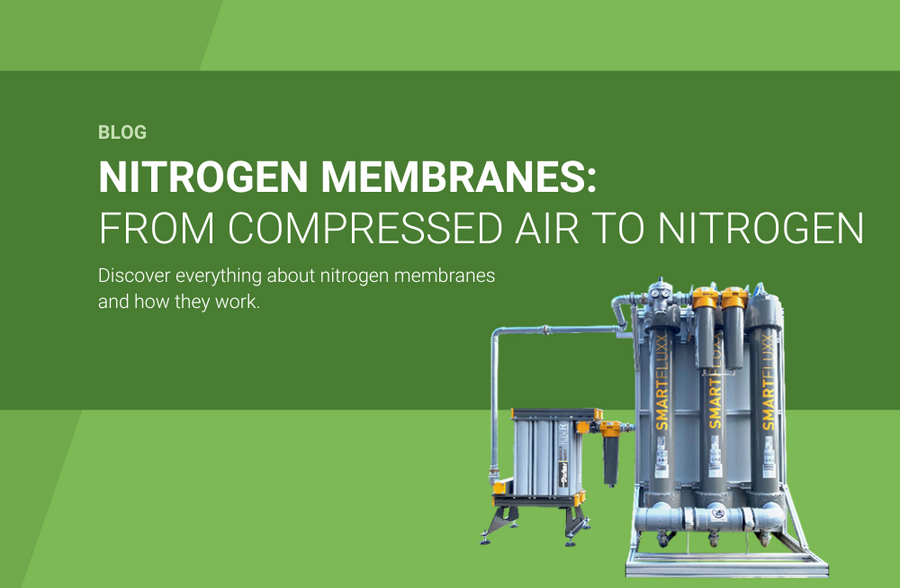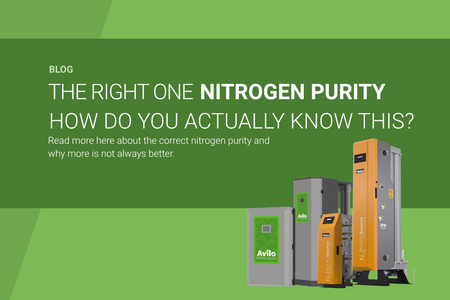
Nitrogen gas is indispensable in many industries. It is used to keep oxygen away from products and processes, such as in food packaging, laboratories, electronics manufacturing, and the oil and gas sector. Nitrogen is often supplied in cylinders or tanks, but there is a much more efficient solution: producing nitrogen directly on-site using a nitrogen membrane.
How does a nitrogen membrane work?
In a nitrogen membrane, compressed air flows through thousands of hollow fibres housed together in a module. The walls of these fibres act as smart filters: oxygen and water molecules pass through more easily than nitrogen molecules. While oxygen-rich air passes through the fibre wall and leaves the module, nitrogen remains inside the fibre and a concentrated nitrogen stream is released at the other end. This creates a continuous and reliable nitrogen supply using nitrogen membranes.
Reliable technology in practice
The strength of a nitrogen membrane lies not only in the production of nitrogen itself but also in the way generators or complete systems are designed. Nitrogen membranes are highly compact and require no moving parts. This results in a simpler design with lower investment and maintenance costs and a longer service life.
Difference between a nitrogen membrane and a nitrogen generator
The terms nitrogen membrane and nitrogen generator are often used interchangeably, but there is indeed a difference.
- The nitrogen membrane forms the core technology: this is the component that separates nitrogen from compressed air.
- The nitrogen generator is the complete system in which one or more membranes are combined with, among other things, the compressor, filters, and control technology.
Efficient operation at lower pressure with nitrogen membranes
A major advantage of Parker nitrogen membranes is that they already operate optimally at a working pressure of 7 to 8 barg, while many alternatives only perform well at 10 to 13 barg or higher compressed air temperatures. This lower pressure and temperature provide significant benefits in practice:

Advantages of lower working pressure
- Longer membrane lifespan: at higher temperatures, membranes wear out faster; with lower pressure, they remain usable for longer.
- Lower investment costs: compressors operating at low pressure are cheaper to purchase and also last longer.
- Less noise and heat: as less air is compressed, compressors run more quietly and generate less heat.
Additional savings in practice
- Less condensation: meaning less wear and maintenance on condensate-draining components.
- Energy savings: for every bar of pressure reduction, a compressor saves on average around 7% energy.
- Lower system costs: at lower pressure, the entire system can be built lighter, saving on material and production costs.
Smart nitrogen solution with membrane technology
With nitrogen membranes, Avilo offers companies a future-proof way to produce nitrogen on-site. A nitrogen membrane is reliable, energy-efficient, and fully tailored to your situation, without dependence on external supplies.
Moreover, with Avilo you get more than just the technology: we provide in-house production and customization, installation and maintenance in the Benelux, fast delivery from stock, and close partnership. This ensures you of a complete and sustainable nitrogen solution.
 EN
EN
 NL
NL


